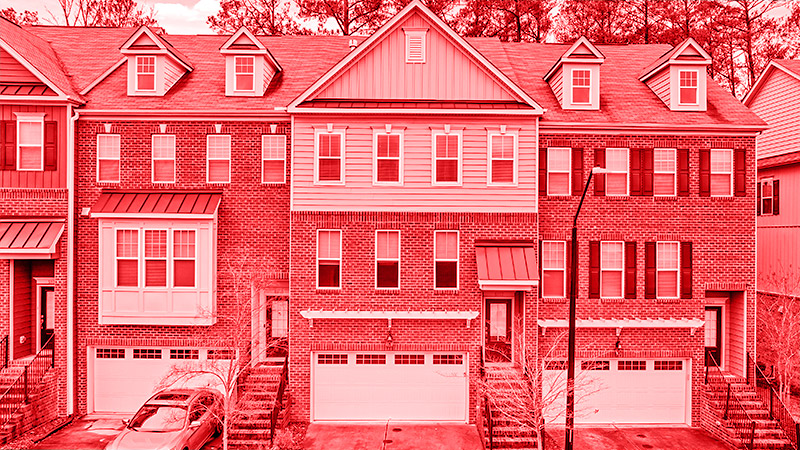People all over the UK are feeling the strain of the cost-of-living crisis caused by economic turbulence and rising inflation.
Since last year, interest rate forecasts in the UK have gradually risen as the Bank of England tries to curb inflation, leading to fears of higher mortgage rates and more pressure on homeowners’ budgets across the UK.
But what is the forecast for interest rates in the UK this year, and how will it affect homeownership?
This guide explores the current and predicted interest rates in the UK and how they affect the mortgage market.
What Are the Interest Rate Forecasts UK?
The Bank of England (BOE) increased the Base Rate nine times in 2022, and the latest change came on February 2nd 2023, rising from 3.5% to 4%, considered the highest level in 14 years.
The rising interest rate is an attempt to reduce soaring annual inflation rates, now at 10.1%, above the target rate of 2%.
The rise in the base rate is higher than was previously predicted, and there are concerns that it might rise again more aggressively to combat inflation.
Further interest rate hikes are accepted in 2023, with forecasts for interest rates UK showing the base rate can increase to between 4.25% and 4.75% by the middle of 2023 and remain around this level for the rest of the year.
The Monetary Policy Committee (MPC) of the BOE, which decides on the actions to take, is set to meet again on March 23rd 2023, to decide on the next level for interest rates.
Why Are There Increases in Interest Rate Forecasts UK?
One of the main jobs of the MPC is to control inflation and ensure it comes down to various targets.
The current target is 2%, and interest rates are used to manage inflation.
Although the BOE can’t stop inflation from going higher or lower than the target, they can try and bring it back to the target by increasing or decreasing the Base Rate.
When inflation is low, and the BOE wants to encourage spending and borrowing, it lowers the base rate, which makes loans more affordable.
When they want to reduce inflation, they raise the base rate, which increases overall interest rates in the UK economy.
Increasing the interest rates makes it more expensive for people to borrow money and buy things.
It encourages people to save rather than spend in the overall economy.
When more people spend less on services and goods overall, the prices of commodities will tend to rise more slowly, trans
What Is the Impact of the Predicted Interest Rates UK on Mortgage Rates?
The Base Rate usually influences other rates in the UK, including those you might have for a loan, mortgage or savings account.
Tracker mortgages directly follow the base rate, and customers can expect mortgage rates to go up in line with the increase.
However, mortgage experts state that despite the interest rate increases by the BOE, not all mortgage rates will go up.
Interest rates for fixed-rate mortgages have gradually declined for the past few months since the mini budget in September 2022.
The current or predicted interest rates in the UK are not expected to impact this trend.
This is because mortgage providers tend to adjust their rates ahead of time to account for worst-case scenario increases.
Most mortgage lenders likely adjusted their rates after the economic turmoil that followed the mini-budget.
Therefore, the knock-on impact of the base rate increases will not affect fixed-rate mortgages in the same way as tracker mortgages.
If you’re on a fixed-rate deal, your mortgage rate will stay the same for the duration of that deal.
With standard variable rates, the rate you automatically move to when your fixed term expires, there is no direct link with the base rate.
However, you’ll be at the lender’s mercy throughout the mortgage’s lifetime.
They can increase or decrease with the base rate or according to the whims of your mortgage provider.
Recommended guides:
- Remortgage for home improvements.
- How long does mortgage approval take?
- Remortgage with bad credit.
- Remortgage for help to buy.
What Should I Do with the Increased Forecast for Interest Rates UK?
An increased forecast for interest rates can be scary for borrowers, especially with soaring food prices, energy bills and other increases in outgoings associated with the cost of living.
A few actions you can take include:
Fixing Your Mortgage
A fixed-rate mortgage can protect you from future rate rises and ensure your mortgage repayments don’t change because of interest rate changes.
A fixed-rate mortgage offers a fixed interest rate for a certain period, and you’re guaranteed to pay the same amount every month.
Fixed-rate mortgages allow borrowers to know exactly how much they pay each month without worrying about unexpected changes.
With rising interest rates and inflation still high, more interest rate rises are likely, resulting in higher mortgage rates that cause your monthly repayments to go up if you don’t fix your mortgage beforehand.
You can choose to fix your mortgage rate for 1, 2, 3, 5, 7, 10, or 15 years.
Two-year fixes are cheaper and usually provide more freedom and access to the best rates.
They’re suitable if you want to switch deals regularly or are considering moving home soon.
Consider how long you want to commit to an agreement and whether your circumstances are likely to change soon.
Lock in a New Rate
You can lock in a new rate if you’re due for a remortgage in the next six months, then switch when your deal ends and avoid early repayment charges (ERCs).
Most lenders set an initial lower fixed interest rate for some time as an incentive to encourage you to apply.
If you can get a new incentive period or deal at substantially lower rates than you currently pay, you can save money by remortgaging.
Will The Predicted Interest Rates UK Cause a Fall in Property Prices?
Yes. An increase in mortgage costs will cause reduced demand for homes, leading to a fall in property prices.
Housing Price indexes have predicted that prices will fall by around 10% in 2023, with the market being dominated by needs-based buyers who don’t rely on mortgages.
However, a resurgence in value may occur in 2024 as economic conditions improve and mortgage rates reduce.
UK Interest Rate Forecasts Final Thoughts
With increases in the base rate and rising UK interest rate forecasts, now is a great time to consider fixing your mortgage and locking in lower rates.
Consulting a qualified mortgage broker can also help you navigate the current climate and get the best mortgage rates for your circumstances.
Call us today on 03330 90 60 30 or contact us. One of our advisors can talk through all of your options with you.















